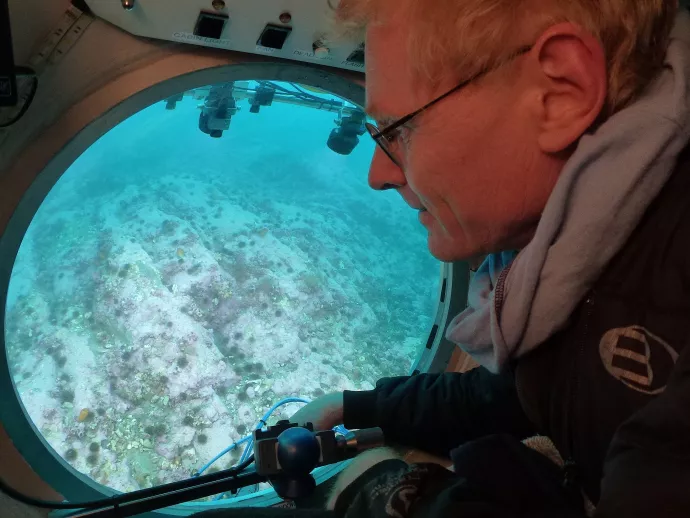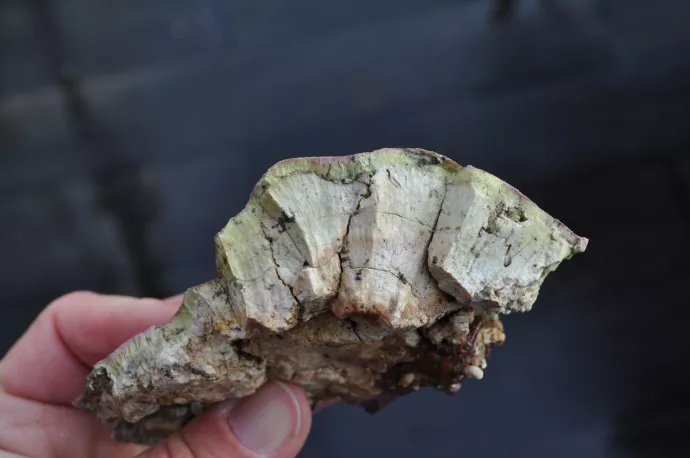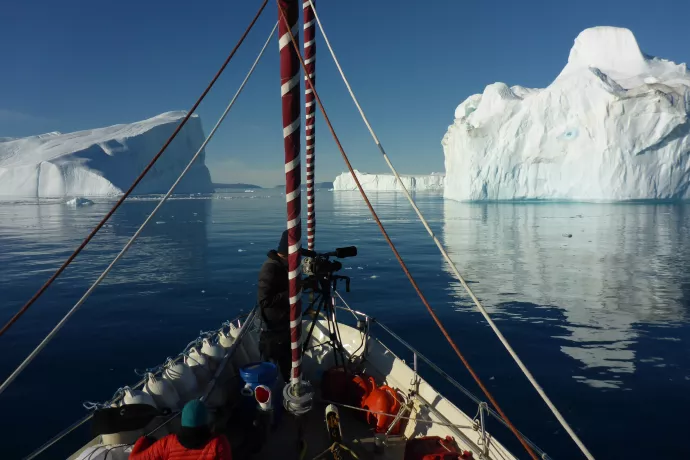
Northern exposure: UTM researcher's Arctic adventures
While Ontario suffered through a heatwave this summer, U of T Mississauga geologist Jochen Halfar was bundled up in Polarfleece, searching Arctic waters for algae.
As a paleoclimatologist, Halfar studies how climates change and behave over long periods of time. Over the summer, his research took him on two northern expeditions, first above the Arctic Circle near Spitsbergen (Svalbard), Norway, followed by three weeks on a sailboat in Canada’s north.
Halfar’s summer mission was to collect samples of coralline algae, a rock-like organism that grows in shallow waters on the ocean floor. The algae has a distinctive calcium carbonate skeleton which, like trees, forms annual rings, growing upwards at one layer per year.
“Locked into that layer is important climate information,” Halfar says. “I can see annual cycles of temperature and get information about water temperatures over a hundred years ago.” The algae also sheds light on sea ice coverage over time. “In a stable environment, these algae can grow for centuries. They need light to grow, so if there is a buildup of ice and snow on the surface, no light will penetrate and the algae will go dormant,” he says. “I am looking for periods of growth and dormancy that can tell us about how long sea ice occurred over a winter.”

Halfar’s first expedition consisted of three weeks aboard the Maria S. Merian, a research vessel with 15 scientists headed north to collect data for various projects. Leaving from Reykjavik, the ship sailed north, arriving near Spitsbergen, about 1,300 kilometers from the North Pole.
Halfar’s samples are typically collected by scuba divers who use a chisel and hammer to prise the algae from the rocks. The algae can be found as far south as Maine, however the location of Halfar’s Norwegian samples—the northern-most specimens ever collected—presented a special challenge. To collect the Spitsbergen samples, Halfar took a 3-hour trip below the icy ocean surface in a tiny two-person submersible equipped with an arm to scoop up algae. Halfar collaborated with former postdoctoral student Steffen Hetzinger, now with the Helmholtz Centre for Ocean Research Kiel, to collect and analyze samples.
Following his Spitsbergen adventure, Halfar next flew to Greenland,where he embarked upon the next step in his Arctic adventures aboard the Vagabond, a 15-meter chartered sailboat that would be home for the next three weeks. Halfar shared cramped quarters were the Vagabond’s captain and his family and a four-person film crew from the German-French network ARTE, who are producing a documentary about Halfar’s research that will air in January 2017.
A three-day sea voyage took Halfar from Greenland to Canada where the team sailed around the northern coast of Baffin Island, eventually tracing a route across Lancaster Sound to Resolute Bay and around the smaller islands. After Halfar left, graduate student Alicia Hou continued the research, travelling through the Gulf of Boothia to Goose Bay, Labrador.

“I’m trying to collect longer-term records going back several hundred years over as wide an area as possible,” Halfar says. “I have to cover a wide geographic area to create this network.”
“Because of satellite technology, we know how the ice has retreated over the last 40 years, but we don’t what happened before that,” Halfar says. “We are trying to get a long-term picture of how sea ice has behaved over the years and before the time of human influence, like the Industrial Revolution. With the algae, I can reconstruct that information.”
Halfar’s specimen haul amounted to about 80 kilograms of samples, which will undergo geochemical analysis.
The data will provide clues about climate in past centuries and help predict what might happen in the future, too. “That data can be used by climate physicists to create models that project climate into the future,” Halfar says. “If we understand the past better, we can predict the future of the ice in the Arctic.”
Read more:
- How will plants adapt to climate change? UTM researchers lead 'pioneering' international study
- UTM study reveals startling new evidence of effects of climate change in the Arctic
- Looking to tree rings for clues about environmental contamination in the Yukon
